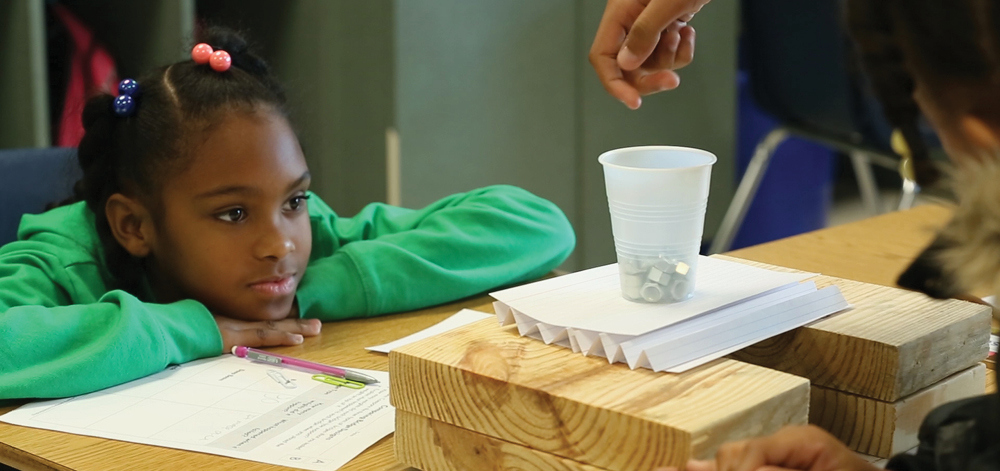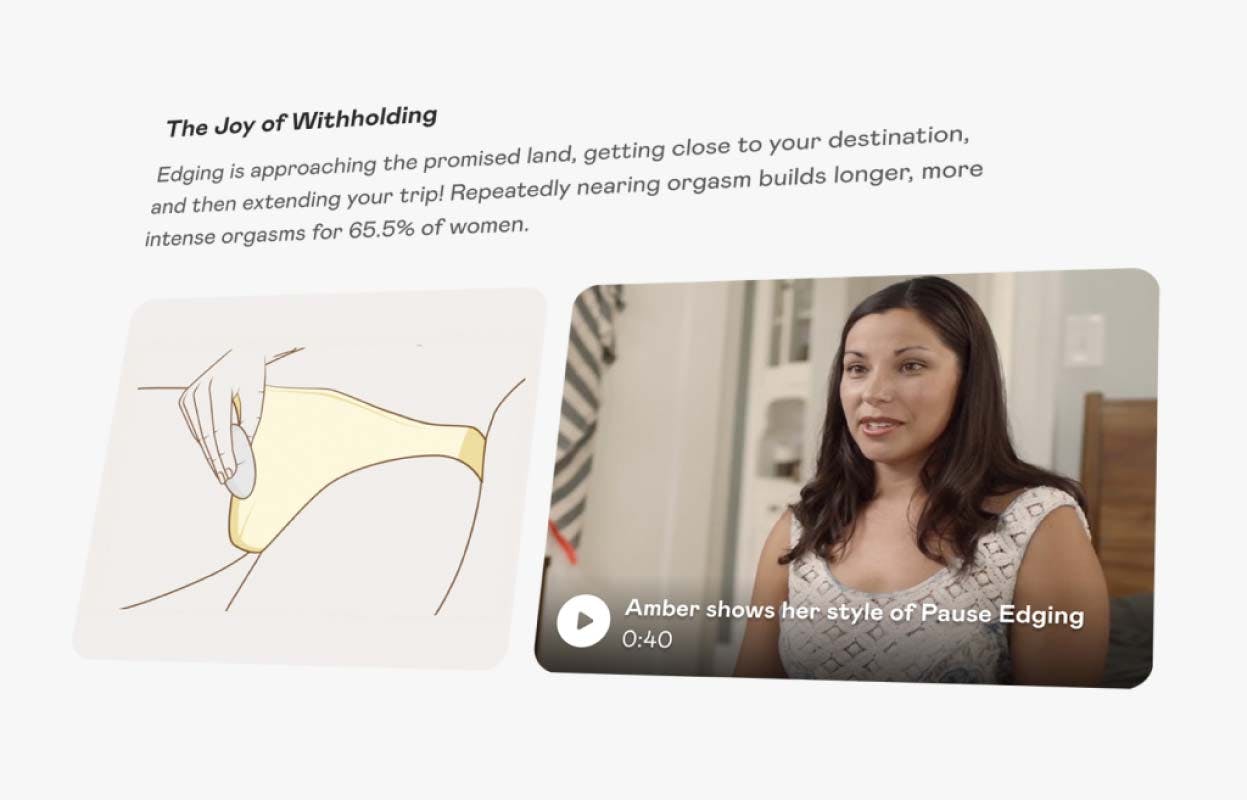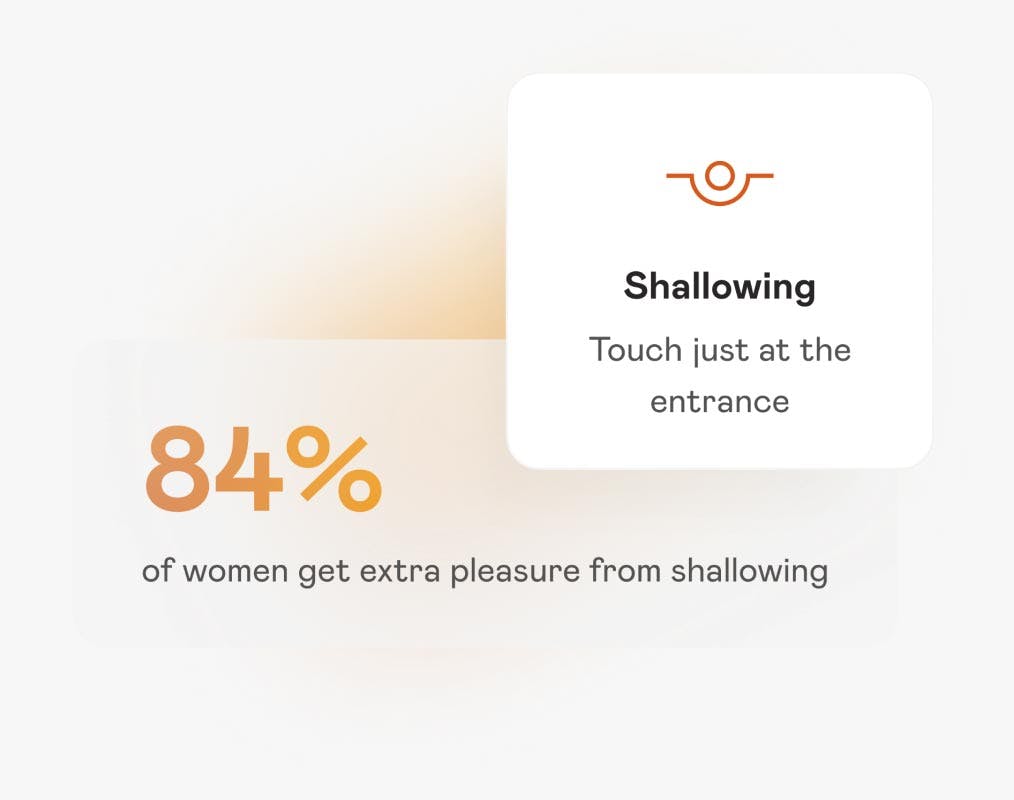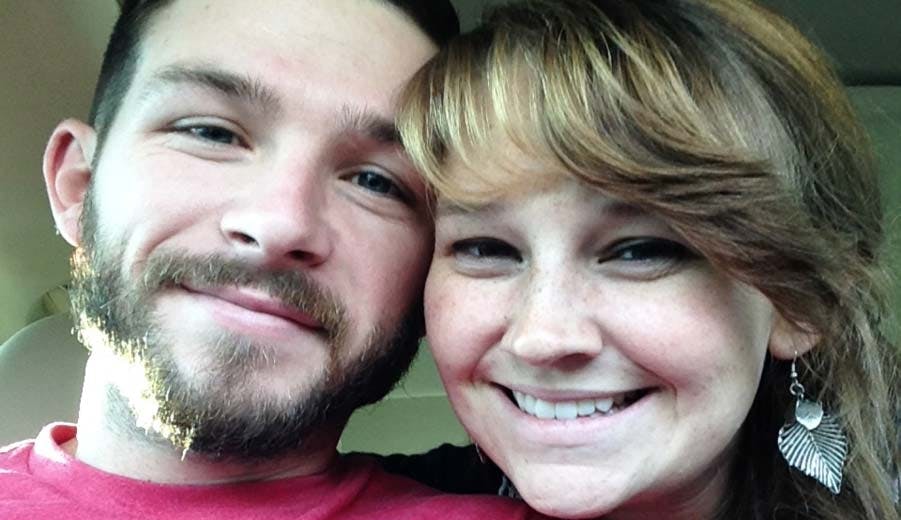- Where We Work
- Publications
- Toolkits & Guides
- Data Collection Tools
- Fact Sheets
- All Resources

Does Social Media Perpetuate Youth Violence?

By: Brittany Bostic, YES Research Assistant
Social Media is a huge part of the lives of everyday Americans, and there is growing evidence to support the role that social media plays in youth violence, both directly and indirectly.
Very similar to the recent cyber bullying phenomenon, Twitter, Facebook, and YouTube have become a platform for youth violence. ABC News covered a story where they interviewed a Chicago resident that showed correspondents how sites were used by gang members to promote violence. It showed how gangs used social media sites to make threats, “call out” rival gangs, promote violence and recruit members. This activity led to real “Stomp-Outs”, real shootings, and real deaths.
In addition to direct violence from social media, a new trend called “Fight Compilations” has become increasingly popular on sites such as World Star Hip Hop and YouTube. Fight Compilations are videos composed of fight snippets that everyday people record, usually on their cell phones.

Continual exposure to violence like this can have adverse effects on youth. Meta-analyses of the unhealthy effects of media-violence have shown that youth who view media-violence on a regular basis are more likely to exhibit antisocial behavior, ranging from imitative violent behavior with toys to criminal violence, acceptance of violent behavior, increased feelings of hostility, and desensitization toward violent behavior. This information is not applicable to all youth who view it, but imagine a young impressionable pre-teen that may think this behavior (hostile fights) is acceptable.
Youth who oftentimes are continually exposed to violence in the media result to violence to solve their problems. This can partially be attributed to what they see and who they’re around, because youth learn their social skills from their surroundings (Social Cognitive Theory, Bandura, 1986).
Social cognitive interventions are one’s whose aim is to equip youth with social skills in order to cope with stressful situations, and are proven to be helpful in positive youth development, and youth violence prevention. From a public health standpoint Browne and Hamilton-Giachritsis describe how solutions to youth violence based from the media are multifaceted, and involves intervention from the key stakeholders; youth, parents, policy makers, and media outlets. But whose job is it really? How do we stop social media from influencing violent behavior among youth?
About the author
Brittany is a second year graduate student studying Health Behavior and Health Education at the U-M School of Public. She is currently working on the YVPC social media campaign, and with YES on the YES Adaptation project.
Bandura, A. (1986). Social foundations of thought and action: A social cognitive theory. Englewood Cliffs, NJ: Prentice-Hall.
Browne, K., and Hamilton-Giachritsis, C. (2005). The influence of violent media on children and adolescents: A public-health approach. The Lancet. 365(9460). 702-710.
Cantor, J. (2000). Media violence. Journal of Adolescent Health. 27(2). Supp. 1. 30-34.
Related Posts
- Internet Banging
Share this:
You must be logged in to post a comment.

- Training & Education
Youth Engaged in Science

The Youth Engaged in Science (YES) program, which runs concurrently with the Scientific Enrichment Opportunity (SEO) program, supports educational opportunities for underrepresented minority high school students from the Cleveland Metropolitan School District (CMSD) and East Cleveland. YES introduces students and their families to the fundamentals of research and actively partners with CMSD teachers to help them develop programs and better explain cancer basics. The program's three-pronged structure engages students early on, sparks their interest in cancer research, and prepares them for future educational opportunities and successful entrance into jobs in clinical or biomedical settings.
During YES, students participate in research projects full-time for eight weeks in the summer, working directly with outstanding Case Comprehensive Cancer Center (Case CCC) faculty investigators .
The National Cancer Institute (NCI) supports the program with a five-year, $2.5 million grant. YES builds on Case Western Reserve University School of Medicine’s successful SEO program and is backed by Case CCC.
Students from CMSD and East Cleveland schools are encouraged to apply.
View 2023 Program Booklet
Application Information
Applications for the 2024 program are closed.
Program Eligibility
Students are selected to participate in this exciting program based on their interest in science, scholastic achievement, and letters of recommendation submitted by high school science teachers and school counselors.
To be eligible for the program, applicants must:
- Attend a Cleveland-area high school
- Have a minimum GPA of 3.0
- Be at least 14 years old by the time they begin research activities
Tips for a Successful Application
- Gather all the materials you need before you begin writing the application.
- Type your answers to the application questions in a Word document first. Use a spell/grammar checker to look for mistakes. When it is perfect, copy and paste it into the online application.
- Avoid one-word answers. Instead, explain your experiences.
- Pay close attention to the questions and make sure to answer them fully.
- Be real about your interests.
- If you are not sure about your scientific focus, say so!
- Get your letters of recommendation and transcripts to us in a timely manner.
Young Epidemiology Scholars Competition
Disease outbreak investigation.
Subject areas: statistics, biology, environmental science, and social studies Grade level: 10th-12th Level of difficulty: low to moderate
Summary: Disease Outbreak Investigation illustrates what an epidemiologist does when investigating disease patterns. Using historical examples, the unit illustrates the steps by which analysis of patterns of disease occurrence leads to understanding of the spread and control of important diseases.
This unit comprises three lessons: the first lesson introduces students to a standard food-borne outbreak investigation; the second introduces students to the scientific investigations of cholera conducted by John Snow in the mid-19th century; and the third illustrates how environmental diseases are investigated, focusing on a leukemia cluster in Woburn, Massachusetts, which inspired the book, A Civil Action .
Download Disease Outbreak Investigation (.pdf/279k) Requires Adobe Reader (latest version recommended).
Back to Instructional Units
Engineering and Computer Science

Research Based
YES both draws from and contributes to educational research.
- We work collaboratively with educators, engineers, and scientists using design-based research methods that include multiple cycles of research, development, testing, and improvement to create high-quality materials.
- Educational research informs our work. Ideas, input, and feedback from educators continually shape our products.
- YES resources are pilot- and field-tested in diverse settings nationwide.
- The team observes lessons, collects student assessments, and examines student work.
The YES team is also keenly interested in improving engineering education through research. In collaboration with schools, educators, and students, we conduct research studies. YES researchers share theoretical frameworks and results of empirical studies in journal articles for researchers and practitioners.
Recent research publications that have shaped YES and the field of engineering education include:
Cunningham, C. M., & Sneider, C. (2023). Precollege engineering education. In Lederman N., Zeidler, D., & Lederman, J. (Eds.), Handbook of research in science education vol III.
Cunningham, C. M., & Kelly, G. J. (2022). A model for equity-oriented preK-12 engineering learning. Journal of Pre-College Engineering Education Research (J-PEER), 12 (2), Article 3. DOI: 10.7771/2157-9288.1375 American Society of Engineering Education Pre-College Engineering Education Best Diversity Paper Honorable Mention
Cunningham, C. M. (2022, July). Engineering solutions for ecological problems. Open Access Government. 218–219. access
Johnson, M. M, Kelly, G. K., & Cunningham, C. M. (2021). Failure and improvement in elementary engineering. Journal of Research in STEM Education. 7(2), 69–92.
Cunningham, C. M., Kelly, G. J., & Meyer, N. (2021). Affordances of engineering with English learners. Science Education. 105, 255–280. DOI: 10.1002/sce.21606
Cunningham, C. M., Wendell, K. B., & Bauer, D. (2021). Crosscutting concepts in engineering. In Nordine, J. & Lee, O. (Eds.), Crosscutting concepts: Strengthening science and engineering learning. (pp. 311–330). Arlington, VA: National Science Teachers Association Press.
Cunningham, C. M. (2018). Engineering in elementary STEM education: Curriculum design, instruction, learning, and assessment. New York, NY: Teachers College Press.
Lachapelle, C. P., Cunningham, C. M., & Oh, Y. (2019). What is technology? Development and evaluation of a simple instrument for measuring children’s conceptions of technology. International Journal of Science Education. 41(2), 188–209. DOI: 10.1080/09500693.2018.1545101
Cunningham, C. M., Lachapelle, C. P., & Davis, M. (2018). Engineering concepts, practices, and trajectories for early childhood education. In English, L. & Moore, T. (Eds.), Early engineering learning (pp. 135–174). New York, NY: Springer.
Lachapelle, C. P., Cunningham, C. M., & Davis, M. (2017). Middle childhood education: Engineering concepts, practices, and trajectories. In deVries, M. J. (Ed.), Handbook of technology education (pp. 141–157). New York, NY: Springer. DOI: 10.1007/978-3-319-38889-2_23-1
Cunningham, C. M., & Kelly, G. K. (2017). Epistemic practices of engineering for education. Science Education. 101, 486–505. DOI: 10.1002/sce.21271
Cunningham, C. M., & Carlsen, W. S. (2014). Precollege engineering education. In N. Lederman (Ed.), Handbook of research on science education, vol II (pp. 747–758). Mahwah, NJ: Lawrence Erlbaum Associates, Publishers.
Lachapelle, C. P., & Cunningham, C. M. (2014). Engineering in elementary schools. In S. Purzer, J. Strobel, & M. Cardella (Eds.), Engineering in pre-college settings: Synthesizing research, policy, and practices (pp. 61–88).Lafayette, IN: Purdue University Press.
Share This Page
Impact Engineering Design Process Engineering Practices Equity-Oriented Engineering Family Engagement Language Scaffolds Mission Research Based
Curricula yes curricula yes elementary yes middle school yes out of school eie curricula wee engineer eie® for kindergarten engineering is elementary®, 2nd edition engineering adventures® engineering everywhere® engineering and computer science families, professional learning webinars & workshops, about us contact news & events partners, order materials , email address [email protected] mailing address 1 science park boston, ma 02114.
©2024 YES – Youth Engineering Solutions
Privacy Policy | Terms and Conditions
Follow Polygon online:
- Follow Polygon on Facebook
- Follow Polygon on Youtube
- Follow Polygon on Instagram
Site search
- Dragon’s Dogma 2
- Ghost of Tsushima
- Zelda: Tears of the Kingdom
- Baldur’s Gate 3
- GTA 5 cheats
- PlayStation
- Dungeons & Dragons
- Magic: The Gathering
- Board Games
- All Tabletop
- All Entertainment
- What to Watch
- What to Play
- Buyer’s Guides
- Really Bad Chess
- All Puzzles
Filed under:
- Pokémon Go guide
Pokémon Go ‘Ultra Space Wonders’ event Timed Research and rewards
Stakataka and Blacephalon make their debut in Pokémon Go
Share this story
- Share this on Facebook
- Share this on Reddit
- Share All sharing options
Share All sharing options for: Pokémon Go ‘Ultra Space Wonders’ event Timed Research and rewards
/cdn.vox-cdn.com/uploads/chorus_image/image/73366019/unnamed.0.jpg)
Pokémon Go is hosting an “ Ultra Space Wonders ” event to wrap up the “World of Wonders” season, which will end in June. The event runs from May 23-28 and it features the debut of the Ultra Beasts Stakataka and Blacephalon .
The event also boosts the spawn of poison-type Pokémon, adds the last leg of the “World of Wonders” Special Research , and rewards doubled XP for winning raids against Ultra Beasts. Mareanie is also available shiny for the first time ever .
:no_upscale()/cdn.vox-cdn.com/uploads/chorus_asset/file/25461821/jlee_240523_1001_pogo_shiny_mareanie_toxapex.jpg)
Below, we list out all the perks of the Pokémon Go “Ultra Space Wonders” event, including the paid Timed Research, Collection Challenge, and event Field Research.
This is a paid research for $5 . Once you buy it, you’ll only have until May 28 at 8 p.m. in your local time to complete it.
Is the ‘Ultra Space Wonders’ paid research ticket worth it?
The value of the “Ultra Space Wonders” paid research ticket is technically worth it, but I would only buy this if you are really hunting for shiny Mareanie or if you want the Naganadel Wings cosmetic.
Step 1 of 1
- Catch 5 poison-type Pokémon (Mareanie encounter)
- Earn 2,000 Stardust (10 Revives)
- Catch 10 poison-type Pokémon (Mareanie encounter)
- Earn 4,000 Stardust (10 Hyper Potions)
- Catch 15 poison-type Pokémon (Mareanie encounter)
- Earn 6,000 Stardust (15 Poké Balls)
- Catch 20 poison-type Pokémon (Mareanie encounter)
- Earn 8,000 Stardust (15 Great Balls)
- Catch 25 poison-type Pokémon (Mareanie encounter)
- Earn 10,000 Stardust (15 Ultra Balls)
- Catch 30 poison-type Pokémon (Mareanie encounter)
- Win a raid (1 Lucky Egg)
Rewards : 4 Premium Battle Passes, Mareanie encounter, Naganadel Wings cosmetic
Pokémon Go ‘Ultra Space Wonders’ event Collection Challenge
There are a few Collection Challenges to complete that involve you catching and evolving specific Pokémon.
Ultra Space Wonders Collection Challenge: Catch
- Catch a Tentacool
- Catch a Mareanie
- Catch a Skrelp
Rewards : 1,000 XP, Mareanie encounter
Ultra Space Wonders Collection Challenge: Research
- Catch a Nidoran-F
- Catch a Nidoran-M
- Catch a Trubbish
Rewards : 5,000 XP, Mareanie encounter
Ultra Space Wonders Collection Challenge: Raid
- Catch a Bagon
- Catch a Deino
- Catch a Druddigon
Rewards : 10,000 XP, Mareanie encounter
Pokémon Go ‘Ultra Space Wonders’ event Field Research and rewards
Spinning a PokéStop during the event period may yield one of these tasks:
- Catch 10 Pokémon (Nidoran-F or Nidoran-M encounter)
- Power up Pokémon 5 times (Trubbish encounter)
- Power up Pokémon 10 times (Mareanie encounter)
- Win a raid (Goomy encounter)
- Win 3 raids (Jangmo-o encounter)
Pokémon Go ‘Ultra Space Wonders’ event boosted spawns
These Pokémon will spawn more frequently during the event period:
:no_upscale()/cdn.vox-cdn.com/uploads/chorus_asset/file/25461807/GNe_WpoW8AACUaB.jpg)
Pokémon Go ‘Ultra Space Wonders’ event raid targets
The following Pokémon will be in raids during the event:
- Paldean Wooper (1-star)
- Hisuian Qwilfish (1-star)
- Hisuian Sneasel (1-star)
- Bagon (1-star)
- Deino (1-star)
- Galarian Weezing (3-star)
- Druddigon (3-star)
- Turtonator (3-star)
- Stakataka (5-star, eastern hemisphere only)
- Blacephalon (5-star, western hemisphere only)
- Mega Pidgeot (Mega)
- Pokémon Go guides
- “Rediscover Kanto” Special Research
- How to find Wiglett
- Ditto disguises
The next level of puzzles.
Take a break from your day by playing a puzzle or two! We’ve got SpellTower, Typeshift, crosswords, and more.
Sign up for the newsletter Patch Notes
A weekly roundup of the best things from Polygon
Just one more thing!
Please check your email to find a confirmation email, and follow the steps to confirm your humanity.
Oops. Something went wrong. Please enter a valid email and try again.
Loading comments...

All hidden face locations in Hellblade 2

Where do your Steam games go when you die?

Our favorite catch’em-all that isn’t Pokémon is on sale for its lowest price ever — and just got a free multiplayer update

Did you watch Gal Gadot’s Heart of Stone? Because tons of Netflix subscribers did, apparently

Hunter Schafer’s unusual Switch habits lead to social media debate

GTA Online update for the week of May 23
Get science-backed answers as you write with Paperpal's Research feature
How to Write a Research Question: Types and Examples

The first step in any research project is framing the research question. It can be considered the core of any systematic investigation as the research outcomes are tied to asking the right questions. Thus, this primary interrogation point sets the pace for your research as it helps collect relevant and insightful information that ultimately influences your work.
Typically, the research question guides the stages of inquiry, analysis, and reporting. Depending on the use of quantifiable or quantitative data, research questions are broadly categorized into quantitative or qualitative research questions. Both types of research questions can be used independently or together, considering the overall focus and objectives of your research.
What is a research question?
A research question is a clear, focused, concise, and arguable question on which your research and writing are centered. 1 It states various aspects of the study, including the population and variables to be studied and the problem the study addresses. These questions also set the boundaries of the study, ensuring cohesion.
Designing the research question is a dynamic process where the researcher can change or refine the research question as they review related literature and develop a framework for the study. Depending on the scale of your research, the study can include single or multiple research questions.
A good research question has the following features:
- It is relevant to the chosen field of study.
- The question posed is arguable and open for debate, requiring synthesizing and analysis of ideas.
- It is focused and concisely framed.
- A feasible solution is possible within the given practical constraint and timeframe.
A poorly formulated research question poses several risks. 1
- Researchers can adopt an erroneous design.
- It can create confusion and hinder the thought process, including developing a clear protocol.
- It can jeopardize publication efforts.
- It causes difficulty in determining the relevance of the study findings.
- It causes difficulty in whether the study fulfils the inclusion criteria for systematic review and meta-analysis. This creates challenges in determining whether additional studies or data collection is needed to answer the question.
- Readers may fail to understand the objective of the study. This reduces the likelihood of the study being cited by others.
Now that you know “What is a research question?”, let’s look at the different types of research questions.
Types of research questions
Depending on the type of research to be done, research questions can be classified broadly into quantitative, qualitative, or mixed-methods studies. Knowing the type of research helps determine the best type of research question that reflects the direction and epistemological underpinnings of your research.
The structure and wording of quantitative 2 and qualitative research 3 questions differ significantly. The quantitative study looks at causal relationships, whereas the qualitative study aims at exploring a phenomenon.
- Quantitative research questions:
- Seeks to investigate social, familial, or educational experiences or processes in a particular context and/or location.
- Answers ‘how,’ ‘what,’ or ‘why’ questions.
- Investigates connections, relations, or comparisons between independent and dependent variables.
Quantitative research questions can be further categorized into descriptive, comparative, and relationship, as explained in the Table below.
- Qualitative research questions
Qualitative research questions are adaptable, non-directional, and more flexible. It concerns broad areas of research or more specific areas of study to discover, explain, or explore a phenomenon. These are further classified as follows:
- Mixed-methods studies
Mixed-methods studies use both quantitative and qualitative research questions to answer your research question. Mixed methods provide a complete picture than standalone quantitative or qualitative research, as it integrates the benefits of both methods. Mixed methods research is often used in multidisciplinary settings and complex situational or societal research, especially in the behavioral, health, and social science fields.

What makes a good research question
A good research question should be clear and focused to guide your research. It should synthesize multiple sources to present your unique argument, and should ideally be something that you are interested in. But avoid questions that can be answered in a few factual statements. The following are the main attributes of a good research question.
- Specific: The research question should not be a fishing expedition performed in the hopes that some new information will be found that will benefit the researcher. The central research question should work with your research problem to keep your work focused. If using multiple questions, they should all tie back to the central aim.
- Measurable: The research question must be answerable using quantitative and/or qualitative data or from scholarly sources to develop your research question. If such data is impossible to access, it is better to rethink your question.
- Attainable: Ensure you have enough time and resources to do all research required to answer your question. If it seems you will not be able to gain access to the data you need, consider narrowing down your question to be more specific.
- You have the expertise
- You have the equipment and resources
- Realistic: Developing your research question should be based on initial reading about your topic. It should focus on addressing a problem or gap in the existing knowledge in your field or discipline.
- Based on some sort of rational physics
- Can be done in a reasonable time frame
- Timely: The research question should contribute to an existing and current debate in your field or in society at large. It should produce knowledge that future researchers or practitioners can later build on.
- Novel
- Based on current technologies.
- Important to answer current problems or concerns.
- Lead to new directions.
- Important: Your question should have some aspect of originality. Incremental research is as important as exploring disruptive technologies. For example, you can focus on a specific location or explore a new angle.
- Meaningful whether the answer is “Yes” or “No.” Closed-ended, yes/no questions are too simple to work as good research questions. Such questions do not provide enough scope for robust investigation and discussion. A good research question requires original data, synthesis of multiple sources, and original interpretation and argumentation before providing an answer.
Steps for developing a good research question
The importance of research questions cannot be understated. When drafting a research question, use the following frameworks to guide the components of your question to ease the process. 4
- Determine the requirements: Before constructing a good research question, set your research requirements. What is the purpose? Is it descriptive, comparative, or explorative research? Determining the research aim will help you choose the most appropriate topic and word your question appropriately.
- Select a broad research topic: Identify a broader subject area of interest that requires investigation. Techniques such as brainstorming or concept mapping can help identify relevant connections and themes within a broad research topic. For example, how to learn and help students learn.
- Perform preliminary investigation: Preliminary research is needed to obtain up-to-date and relevant knowledge on your topic. It also helps identify issues currently being discussed from which information gaps can be identified.
- Narrow your focus: Narrow the scope and focus of your research to a specific niche. This involves focusing on gaps in existing knowledge or recent literature or extending or complementing the findings of existing literature. Another approach involves constructing strong research questions that challenge your views or knowledge of the area of study (Example: Is learning consistent with the existing learning theory and research).
- Identify the research problem: Once the research question has been framed, one should evaluate it. This is to realize the importance of the research questions and if there is a need for more revising (Example: How do your beliefs on learning theory and research impact your instructional practices).
How to write a research question
Those struggling to understand how to write a research question, these simple steps can help you simplify the process of writing a research question.
Sample Research Questions
The following are some bad and good research question examples
- Example 1
- Example 2
References:
- Thabane, L., Thomas, T., Ye, C., & Paul, J. (2009). Posing the research question: not so simple. Canadian Journal of Anesthesia/Journal canadien d’anesthésie , 56 (1), 71-79.
- Rutberg, S., & Bouikidis, C. D. (2018). Focusing on the fundamentals: A simplistic differentiation between qualitative and quantitative research. Nephrology Nursing Journal , 45 (2), 209-213.
- Kyngäs, H. (2020). Qualitative research and content analysis. The application of content analysis in nursing science research , 3-11.
- Mattick, K., Johnston, J., & de la Croix, A. (2018). How to… write a good research question. The clinical teacher , 15 (2), 104-108.
- Fandino, W. (2019). Formulating a good research question: Pearls and pitfalls. Indian Journal of Anaesthesia , 63 (8), 611.
- Richardson, W. S., Wilson, M. C., Nishikawa, J., & Hayward, R. S. (1995). The well-built clinical question: a key to evidence-based decisions. ACP journal club , 123 (3), A12-A13
Paperpal is a comprehensive AI writing toolkit that helps students and researchers achieve 2x the writing in half the time. It leverages 21+ years of STM experience and insights from millions of research articles to provide in-depth academic writing, language editing, and submission readiness support to help you write better, faster.
Get accurate academic translations, rewriting support, grammar checks, vocabulary suggestions, and generative AI assistance that delivers human precision at machine speed. Try for free or upgrade to Paperpal Prime starting at US$19 a month to access premium features, including consistency, plagiarism, and 30+ submission readiness checks to help you succeed.
Experience the future of academic writing – Sign up to Paperpal and start writing for free!
Related Reads:
- Scientific Writing Style Guides Explained
- Ethical Research Practices For Research with Human Subjects
- 8 Most Effective Ways to Increase Motivation for Thesis Writing
- 6 Tips for Post-Doc Researchers to Take Their Career to the Next Level
Transitive and Intransitive Verbs in the World of Research
Language and grammar rules for academic writing, you may also like, academic editing: how to self-edit academic text with..., measuring academic success: definition & strategies for excellence, phd qualifying exam: tips for success , quillbot review: features, pricing, and free alternatives, what is an academic paper types and elements , 9 steps to publish a research paper, what are the different types of research papers, how to make translating academic papers less challenging, 6 tips for post-doc researchers to take their..., presenting research data effectively through tables and figures.
- SUGGESTED TOPICS
- The Magazine
- Newsletters
- Managing Yourself
- Managing Teams
- Work-life Balance
- The Big Idea
- Data & Visuals
- Reading Lists
- Case Selections
- HBR Learning
- Topic Feeds
- Account Settings
- Email Preferences
3 Ways to Make a Request That Doesn’t Feel Coercive
- Rachel Schlund,
- Roseanna Sommers,
- Vanessa Bohns

To get an authentic yes, give your employee room to say no.
Research shows that people feel more pressured to agree to requests than we realize, frequently agreeing to do things they would rather not do, such as taking on burdensome, low-promotability work tasks. As a manager, what can you do to ensure that your employees aren’t taking things on because they feel like they have to, but because they actually want to? In this article, the authors share three research-backed suggestions for how to elicit a more voluntary “yes” when making a request: 1) Give people time to respond. 2) Ask them to respond over email. 3) Share an example of how to say “no.”
When staffing a project, asking your team to work overtime, or finding someone for a last-minute task to meet a deadline, it can sometimes feel like you need to get your employees to say “yes” at any cost. But what is that cost? When employees feel pressured or guilted into agreeing to a request they personally find disagreeable it can lead to feelings of regret, frustration, and resentment. An employee who begrudgingly agrees to a request in the moment may provide lower-quality assistance or back out of their commitment at a less convenient time.
- Rachel Schlund is an incoming Principal Researcher at the University of Chicago, Booth School of Business. She is currently finishing her PhD in organizational behavior at Cornell University. You can learn more about her research here .
- Roseanna Sommers (JD/PhD) is an Assistant Professor of Law at the University of Michigan, where she directs the psychology and law studies lab. Her teaching and research interests revolve around the many ways in which the law misunderstands people and people misunderstand the law. You can learn more about her research on consent and related topics here .
- Vanessa Bohns is a Professor of Organizational Behavior at Cornell University and the author of You Have More Influence Than You Think . You can learn more about her research on social influence and persuasion here .
Partner Center
This site requires Javascript to work, please enable Javascript or try another browser.
Already have an account?

Join 1 million people experiencing more intimacy & pleasure

What is OMGYES?
Findings from the largest-ever research study In partnership with researchers at Indiana University, the Kinsey Institute and Yale University, we've conducted thousands of in-depth interviews and the first-ever large-scale, peer-reviewed and published studies about techniques for women's pleasure. into women’s pleasure
Explore new techniques with super-honest videos, animations & how-to’s
Inspiration for women, men & couples, solo or together

A Fly-Through of the OMGYES Site
A taste of what you’ll get
Learn from hundreds of topics & techniques.

Hear what women wish they’d known sooner
(& what they wish their partners knew)

Learn from hundreds of clarifying animations & tasteful videos
See examples of:

Explore with Confidence
Techniques grounded in science. From our in-depth studies In partnership with researchers at Indiana University, the Kinsey Institute and Yale University, we’ve conducted thousands of in-depth interviews and the first-ever large-scale, peer-reviewed and published studies about techniques for women’s pleasure. with 20,000 women

Ready to get started?
What people are getting from it.

It gave us shared words
“It’s so simple but having these shared words for what we each like makes us more confident asking for things.” - Valeria & Marlo

We try a new technique a week
“We learn the techniques separately and try a different one each time. Some work, others don’t - but it’s intimate & fun.” - Aurora & Dave

It gave us the tools to talk about it
“OMGYES is not just the techniques - it’s how to bring them up, first try them and adjust them.” - Dylan & Amy
Recommended by
“The best gift you could ever give yourself”
“Remarkable and useful... marvelously in-depth”
“Honest and accurate”
“Both of you will reap the benefits.”
“Women of all ages cheerfully share what feels good”
“Like a position book from the future”
“drawn from women’s collective experience”
“Warm, wise, tasteful and fun.”
“There’s no judgement or shame”
”The next wave of an unfinished sexual revolution.”
“Fantastically refreshing.”
“Tastefully designed and well-produced.”
Even Emma Watson gave OMGYES a shoutout!
“I wish it would have been around sooner. Definitely check it out”

Be part of a change for the better
OMGYES is on a mission to break taboos and make understanding female pleasure open and honest

Alba: Why I Participated
Lasting benefits

OMGYES users have better sex and happier relationships
as shown in a 2021 Indiana University School of Medicine study
95% experienced new kinds of pleasure
89% experienced more pleasurable sex
81% discovered new ways to tell their partner what they like
Indiana University School of Medicine study of 807 couples, comparing before & 1-month after using OMGYES.
Published in Journal of Sex Research, June 2021. Read the paper here.

Is this a subscription site? NOPE!
Pay once and access the library of techniques forever, like buying a book.
A SPIE 2017 Electronic Imaging paper
A spie 2016 electronic imaging submitted paper, istituto superiore delle comunicazioni e delle tecnologie dell’informazione, 2021 aeit international annual conference, ansaldo sva5 airplane (free).
Pediatric Anesthesiologist at CHOP Seeking Motivated Students Interested in Biomedical Research
Mentor areas.
1- Neuro-monitoring in children.
2- Machine learning.
3- Biomedical informatics.
4- Hospital sustainability.
Interested students, please email [email protected], NOT the Penn email.
Description:
The goals of my research are to optimize anesthetic dose through neuro-monitoring and to reduce the carbon footprint of our operating rooms. To that end, I am seeking a motivated undergraduate student interested in research on: 1) EEG signal processing, 2) machine learning, 3) biomedical informatics to improve clinical outcomes, or 4) hospital sustainability.
Particularly suited for someone in engineering or pre-med track. My last two mentees's research led to authorship on multiple publications and both successfully matriculated to med school (Northwestern and Harvard).
Clinical shadowing opportunities in the operating room are also provided for interested students.
See full publication list below.
https://www.med.upenn.edu/apps/faculty/index.php/g275/p8198998
https://pubmed.ncbi.nlm.nih.gov/?term=ian+yuan
Preferred Qualifications
1- EEG signal processing: Experience with Matlab programming preferred to process time series data.
2) Machine learning: Experience with R or python or other modern machine learning program
3) Biomedical informatics to improve clinical outcomes: Experience with Excel or other data programming language (R, Python)
4) Hospital sustainability. Ability to come on site to hospital
Project Website
Learn more about the researcher and/or the project here. https://www.med.upenn.edu/apps/faculty/index.php/g275/p8198998
Preferred Student Year
First-year, Second-Year, Junior, Senior
Project Academic Year
Academic term.
Fall, Spring, Summer
- YES BANK LTD.
- SECTOR : BANKING AND FINANCE
- INDUSTRY : BANKS
YES Bank Ltd.
NSE: YESBANK | BSE: 532648
Mid-range Performer
23.10 0.15 ( 0.65 %)
29.68% Fall from 52W High
124.3M NSE+BSE Volume
NSE 23 May, 2024 3:31 PM (IST)
- Share on Facebook
- Share on LinkedIn
- Share via Whatsapp
Broker average target upside potential%
Broker 1Year buys
0 active buys
Broker 1Year sells
2 active sells
Broker 1Year neutral
0 active holds
Broker 1M Reco upgrade
0 Broker 1M Reco upgrade
YES Bank Ltd. share price target
Yes bank ltd. has an average target of 17.50. the consensus estimate represents a downside of -24.24% from the last price of 23.10. view 4 reports from 2 analysts offering long-term price targets for yes bank ltd...

- Recent Upgrades
- Recent Downgrades
- Sector Updates
- Most Recent

East Liberty nonprofit Youth Enrichment Services Named 2019 Champion in Action
“trib total media recognizes the power of the mentorship provided to young people in the pittsburgh region by youth enrichment services.” — jennifer bertetto, trib total media president and ceo, by courier editor, march 4, 2019.
The New Pittsburgh Courier has learned that Youth Enrichment Services (YES), a nonprofit providing socially and economically at-risk youth the opportunity to achieve success through participation in mentorship, education and enrichment programs, has been named a 2019 Champion in Action in the category of Youth Leadership. The award, announced jointly by Citizens Bank, WPXI-TV, Trib Total Media and Pittsburgh Cares, includes $35,000 in unrestricted funding as well as promotional and volunteer support for the organization’s outstanding work, according to a release.
Youth Enrichment Services (YES) provides empowerment, experiential opportunities, academic enrichment and summer employment as positive pathways to future success. YES partners with local organizations to create synergy and generates transformative stories, national accolades and positive research outcomes.
Click here for entire article »
2024, a march toward sustainability >>

RESEARCH SYMPOSIUM
Russia Has Resorted to Using Golf Carts—Yes, Golf Carts—in Combat
Is it a tactical evolution, or a sign of material scarcity?

Gear-obsessed editors choose every product we review. We may earn commission if you buy from a link. Why Trust Us?
You might think that sounds like darkly satirical dystopian science fiction, but videos circulating on both Ukrainian and Russian social media reveal that this is yet another horrifying reality of Russia’s invasion of Ukraine.
The frontline in Ukraine has become a war of tree lines held by entrenched infantry. Crossing the open fields between the tree lines is too often suicidal, so vehicles that can transport assault infantry most of the way are of premium value to both Russia and Ukraine.
But as Russia’s huge pre-war back inventory of retired Soviet armored vehicles grows thinner and thinner, second-line Russian units are increasingly making do with improvised transports for assaulting enemy positions—particularly, a 4x4 golf-cart style All Terrain Vehicle called the Desertcross 1000-3, built by Chinese company Aodo.
There are, to be fair, sensible military applications for ATVs—they can help move equipment, supplies, and personnel in off-road contexts behind the frontline. There’s also higher-risk concepts, such as using these vehicles as mobile shoot-and-scoot platforms for long-range heavy weapons, or to patrol rear areas against infiltration.
Ukrainian special forces have been recorded using ‘dune buggy’ Ranger 4x4 ATVs and larger ‘Razor’ MRZR vehicles (built by American company Polaris) in reconnaissance roles and for the insertion of special operations forces.
But head-on assaults on entrenched enemies is another matter. The carts are open-topped and unarmored, so both the vehicles and passengers can be destroyed as quickly and brutally as you’d expect by kamikaze drones , mines, or heavy weapons fire.
Yet, for months, Russia has been hurling small-scale (i.e. mostly squad or platoon-sized) attacks at Ukrainian lines mounted in these vehicle. And through sheer numbers, they have occasionally succeeded in finding weak spots in Ukrainian defenses.
Russian President Vladimir Putin personally inspected the Chinese ATVs on November 10, 2023, giving the near-suicidal assault vehicle his personal stamp of approval. By that time, Russia had received 537 of the total 2100 vehicles, bought at a unit price of 1.58 million rubles ($17,141 in USD) for each Desertcross, or 2.1 million rubles ($22,782 USD) for upgraded variants. Desertcrosses sold in the U.S. range slightly higher, at up to $20,000.
Less than a month later, on December 3, the first two Desertcrosses were destroyed near Krynky by Ukrainian quadcopter heavy bomber drones of the Magyar Birds unit. The drones apparently dropped rocket propelled grenades from above.
The 2022-era Desertcross models purchased by Russia weigh over 3,500 pounds, have a max payload capacity exceeding 1,200 pounds, and have seating for three passengers in addition to the driver. Alternately, they can tow a one-ton payload. An 85-horsepower engine propels the cart to a maximum road speed of 50 miles per hour, while its 12.7 gallon fuel tanks allows for 155 miles of travel.
Features enhancing all-terrain performance include electrically powered steering and hydraulic disc-type brakes. Special equipment includes straps to tie down two patients in stretchers for casualty evacuation (CASEVAC) missions. There’s also a winch for towing trailers.
Desertcrosses have also been seen mounting PKM 7.62-millimeter medium machine guns on its hood, and have been spotted installing NSV or Kord 12.7-millimeter heavy machine guns and AGS-17 30-millimete automatic grenade launchers on the flatbed.
So many of these vehicles are getting picked off by drones that there are several different modifications featuring anti-drone nets or cages. Russia’s specialized RKhBZ troops (specialized in defense against chemical, nuclear, and biological warfare) also use Desertcrosses with smoke dispensers to lay smoke screens.
The ATVs are, in a sense, emblematic of the kind help Russia is receiving from China (which, in theory, has friendly relations with Russia). Had China opened the floodgates for sales of artillery shells, missiles , and armored vehicles, Russia’s situation would be drastically improved. But President Xi Jinping is wary of the repercussions of more openly supporting Russia’s war, and has mostly prevented overt military exports.
Instead, China—along with India— have helped keep Russia’s economy afloat by buying Russian oil (albeit at very advantageous prices). And Russian volunteers knock on the doors of Chinese drone manufacturers to acquire ostensibly civilian equipment like the Desertcrosses and thousands of consumer drones (which Ukraine has also found means to acquire), which are then adopted for military use.
The bikers of Bakhmut
Another cheap civilian vehicle Russia has turned to is the motorcycle, using both motorbikes (sometimes with sidecars) and quadbikes (which typically carry three personnel each) to carry infantry.
Motorcycles have long had their military uses for personnel transport and communication, and even light combat reconnaissance roles flooding road networks in advance of mobile forces. In World War II, both Germany and the U.K. fielded entire motorcycle battalions in combat scouting roles, including some side-car motorcycles carrying heavy weapons such as machine guns, anti-tank rifles, and light mortars.
Russia now appears to have mounted Strela anti-aircraft teams on motorcycles.
But just like for its ATVs, Russia isn’t using motorcycle infantry as modern light cavalry. Some are assaulting Ukrainian trenches as if reenacting the Charge of the Light Brigade at the Battle of Balaclava.
Bike-mounted troops are even more exposed to drones and small arms than those in golf carts. However, bikes are fast and maneuverable enough that they’re hard to hit with indirect artillery fire (which usually takes minutes to summon even under ideal circumstances.)
Still, Russia’s bike assaults typically go about as well as one would expect, with motorcycle units defeated near Bakhmut on April 15 and at Novomykhailivka on May 7 by Ukraine’s 92 nd Mechanized and 79 Airborne brigades , respectively.
Ukrainian troops claim that captured Russian bike assault troops are saying they were given drugs prior to the assault which removed their desire to eat or sleep for a day.
Why is Russia sending men to battle in vulnerable civilian vehicles?

In the reverse of its situation early in the war, Russia’s military doesn’t want for personnel in 2024, but faces shortages in a wide variety of munitions and armored vehicles. Russia’s military wanted to press on all fronts, but can’t afford to continue losing armored vehicles at the current rate. Using Desertcrosses in an assault role alleviates attrition of valuable armored vehicles , even at the cost of higher personnel losses, which Russia can more easily replace.
The cart/bike assaults also reflect a numbers game strategy, testing Ukrainian forces broadly across the frontline with small scale assaults that zoom in toward Ukrainian trenches after they were hit by artillery and powerful (if not especially accurate) UMPK glide bombs .
Most of these small-scale attacks fail, but the raids sometimes ferret out unoccupied gaps in the defenses or positions which have been abandoned or badly compromised by the preparatory bombardment. In such cases, the speed of the carts/bikes may be sufficient to quickly get infantry to seize the position before drones and artillery fires can be vectored in.
A Ukrainian military analyst and former officer going by the nom de guerre Tatarigami wrote on social media that while Russia “remains a serious battlefield threat, their ability to replace lost armored vehicles is limited.”
They continued:
“Overall, implementing light vehicles for quick delivery or evacuation [of troops] is a valid tactic. Since their current vehicle fleet does not meet battlefield needs, motorcycles are used instead...larger vehicles like BMPs are less maneuverable and more visible, especially with FPV [drone] cages. Meanwhile, small ATVs or motorcycles can quickly transport a small group or evacuate the wounded, while keeping much lower profile.”
Likewise, in a social media post , military analyst Rob Lee explained the logic in Russia’s ATV and bike tactics:
“Both sides always have Mavic [civilian drones] or similar UAVs scanning the horizon. They will notice dust clouds first. That means they are more likely to identify a tracked armored vehicle on the move sooner.
Using a motorcycle or ATV means you can get to the Forward Line of Own Troops (FLOT) faster before FPV kamikaze drones or artillery can be called in, which could compensate for the lack of protection. It doesn't mean these are safe options, just that they may be comparatively less risky than the alternatives. In other words, while ATVs and motorcycles may be vulnerable, so have proven troops packed into slower moving armored personnel carriers.”
But while golf carts and bikes might be stealthier, there remain a lot of battlefield threats that can tear up a golf cart (or the unprotected people inside it) with relative ease— rifles , machine guns, grenades, and shrapnel from artillery—even if they struggle to harm armored vehicles.
Here, however, Russia may be exploiting the fact that Ukraine has suffered a crippling shortfall of artillery ammunition since Republicans in congress halted deliveries of U.S. military aid last Fall. This has compelled Ukraine to rely on precision-attacks by kamikaze drones as a substitute for barrages from heavy 155-millimeter artillery shells.
As U.S. military aid resumed in April, Russia’s golf-cart and motorbike infantry are now racing against time as Russia seeks to press its advantage before the full bulk of shipments from the U.S. make their way to Ukraine’s frontline forces.
Sébastien Roblin has written on the technical, historical, and political aspects of international security and conflict for publications including 19FortyFive, The National Interest, MSNBC, Forbes.com, Inside Unmanned Systems and War is Boring. He holds a Master’s degree from Georgetown University and served with the Peace Corps in China. You can follow his articles on Twitter .

.css-cuqpxl:before{padding-right:0.3125rem;content:'//';display:inline;} Pop Mech Pro .css-xtujxj:before{padding-left:0.3125rem;content:'//';display:inline;}

The Long and Messy Search for Al Capone's Treasure

Skunk Works Unveils Stealthy Tanker Design

Rebuilding the Maze

A Groundbreaking Discovery For Light-Speed Travel

The Bradley Gets a New Iron Fist

South Africa Wins Fight for 'Indian Titanic' Loot

Can the Army’s New Rifle Take on Russian Armor?

Overhaul Your Shop

The Source of All Consciousness May Be Black Holes

F-22s are Flocking to This Island in the Pacific

Special Ops Gunship Shreds “Fishing Boat”

IMAGES
VIDEO
COMMENTS
It is the power of being in control of their business that we give them. Seeing you succeed drives us!" - Dominik Tkáč, Co-founder of Yes-Research. Website. https://www.yes-research.com ...
The overarching goal of the NCI Youth Enjoy Science (YES) Research Education Program (R25) is to support educational activities that encourage individuals from diverse backgrounds, including those from groups underrepresented in the biomedical and behavioral sciences, to pursue further studies or careers in research. WHICH INSTITUTIONS ARE ...
Yes-Research General Information. Description. Developer of management software intended to automate all data flows and processes. The company's software offers digital floorplans, tenants' or employees' performance management tools, and watchdog modules, enabling shopping centers, retail chains, and real estate to receive a fully customized workflow.
By: Brittany Bostic, YES Research Assistant. Social Media is a huge part of the lives of everyday Americans, and there is growing evidence to support the role that social media plays in youth violence, both directly and indirectly. Very similar to the recent cyber bullying phenomenon, Twitter, Facebook, and YouTube have become a platform for ...
Petr Bartošek, Yes-Research s.r.o. [email protected] +420 607 177 293 ...
During YES, students participate in research projects full-time for eight weeks in the summer, working directly with outstanding Case Comprehensive Cancer Center (Case CCC) faculty investigators. The National Cancer Institute (NCI) supports the program with a five-year, $2.5 million grant. YES builds on Case Western Reserve University School of ...
Grade level: 10th-12th. Level of difficulty: low to moderate. Summary: Disease Outbreak Investigation illustrates what an epidemiologist does when investigating disease patterns. Using historical examples, the unit illustrates the steps by which analysis of patterns of disease occurrence leads to understanding of the spread and control of ...
Welcome to the YES! Web site! The Youth, Education, & Society (YES) project, begun in 1997, is a nationwide study of American secondary schools and the students in them. YES is conducted by the Survey Research Center (SRC), part of the Institute for Social Research at the University of Michigan. The Robert Wood Johnson Foundation, one of the ...
YES both draws from and contributes to educational research. The YES team is also keenly interested in improving engineering education through research. In collaboration with schools, educators, and students, we conduct research studies. YES researchers share theoretical frameworks and results of empirical studies in journal articles for researchers and practitioners.
Dominik Tkáč, Yes-Research s.r.o. [email protected] +420 607 177 293 ...
The YES Research Lab is composed of talented and motivated undergraduate and graduate students who are enrolled at Georgetown University. The YES Research Lab attracts research assistants who are interested in gaining experience about the scientific research process in the discipline of organizational behavior, which is at the nexus of psychology and business.
Pokémon Go is hosting an " Ultra Space Wonders " event to wrap up the "World of Wonders" season, which will end in June. The event runs from May 23-28 and it features the debut of the ...
Choose a broad topic, such as "learner support" or "social media influence" for your study. Select topics of interest to make research more enjoyable and stay motivated. Preliminary research. The goal is to refine and focus your research question. The following strategies can help: Skim various scholarly articles.
The first question asks for a ready-made solution, and is not focused or researchable. The second question is a clearer comparative question, but note that it may not be practically feasible. For a smaller research project or thesis, it could be narrowed down further to focus on the effectiveness of drunk driving laws in just one or two countries.
In this article, the authors share three research-backed suggestions for how to elicit a more voluntary "yes" when making a request: 1) Give people time to respond. 2) Ask them to respond over ...
Finally - an honest, informative, research-based approach. Explore with Confidence. Techniques grounded in science. From our in-depth studies In partnership with researchers at Indiana University, the Kinsey Institute and Yale University, we've conducted thousands of in-depth interviews and the first-ever large-scale, peer-reviewed and published studies about techniques for women's pleasure.
Electronic Imaging research. In the Future … We trust! Drone detection by acoustic signature identification A SPIE 2017 Electronic Imaging paper Example of LG-LPR techniques for Image rendering in frequency domain A SPIE 2016 Electronic Imaging submitted paper
Sustainable Economic Growth. Health and Wellbeing. Climate Action. The YES research program included more than 40 academics, 30 youth research students and 3026 youth participants, on 12 cross-disciplinary projects. These projects developed the employability and research capacity of youth, while advancing the SDGs.
The Young Engineers and Scientists (YES) program is a thirteen day intensive mentoring program, where students entering their senior year of high school listen to lectures, take tours, and work on real projects. The program is hosted on the Southwest Research Institute (SwRI) campus and runs from 8:30am to 4:30pm each day. Engineers and ...
Absolutely! Here are the 3 more "why" to use yes or no questions in your surveys: #1. They're Fast. With a yes-or-no question, there are only two possible answers — yes or no. That makes answering them really fast, and when such questions are in the majority, completing a yes or no survey doesn't take long. #2.
Try to use food sources for omega-3s When it comes to fish oil, "the devil is in the details," said Alzheimer's preventive neurologist Dr. Richard Isaacson, director of research at the ...
Answering yes/no questions (Y/N-Q responding) is a fundamental repertoire in human language and thus it is of both theoretical and practical importance to investigate the origins and development of this repertoire in children and to examine processes whereby it can be trained in populations in whom it does not easily emerge. This article examines research and theory concerning the development ...
The goals of my research are to optimize anesthetic dose through neuro-monitoring and to reduce the carbon footprint of our operating rooms. To that end, I am seeking a motivated undergraduate student interested in research on: 1) EEG signal processing, 2) machine learning, 3) biomedical informatics to improve clinical outcomes, or 4) hospital sustainability.
YES Bank Ltd. share price target. YES Bank Ltd. has an average target of 17.50. The consensus estimate represents a downside of -25.05% from the last price of 23.35. View 4 reports from 2 analysts offering long-term price targets for YES Bank Ltd.. Reco - This broker has downgraded this stock from it's previous report.
Youth Enrichment Services (YES) provides empowerment, experiential opportunities, academic enrichment and summer employment as positive pathways to future success. YES partners with local organizations to create synergy and generates transformative stories, national accolades and positive research outcomes. Click here for entire article »
A good research question is essential to guide your research paper, dissertation, or thesis. All research questions should be: Focused on a single problem or issue. Researchable using primary and/or secondary sources. Feasible to answer within the timeframe and practical constraints. Specific enough to answer thoroughly.
ABSTRACT. The purpose of this study was to evaluate the acceptability, feasibility, and preliminary efficacy of using an online educational resource that presents research-informed strategies for women's pleasure, OMGyes.com, as a resource to empower women to broaden the ways in which they understand, advocate for, and enjoy sexual pleasure.
2. Opportunity to build your credit score. A store credit card gives you the opportunity to establish or improve your score if you've struggled in the past or are building credit for the first ...
By that time, Russia had received 537 of the total 2100 vehicles, bought at a unit price of 1.58 million rubles ($17,141 in USD) for each Desertcross, or 2.1 million rubles ($22,782 USD) for ...
The team's research couldn't be timelier. The Sun is currently approaching its solar maximum, which is the point in the 11-year-cycle of its magnetic field when its activity is at its strongest. This produces powerful solar storms. The most powerful solar storm recorded history took place in 1859, in what is known as the Carrington Event.